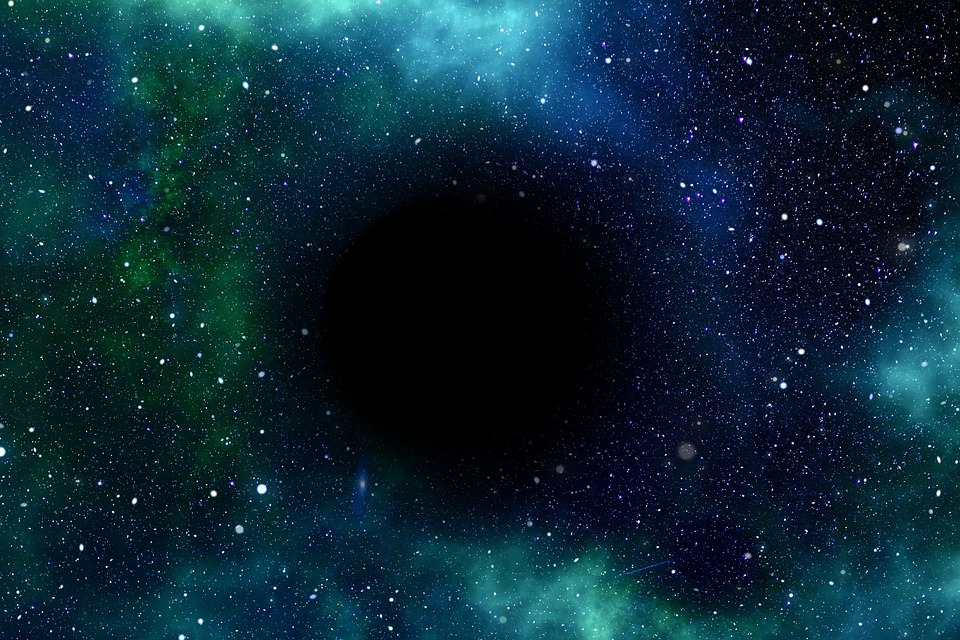Black holes reside in the heart of galaxies, and in a span of billions of years, can consume everything it can come across, including light. Recently, some scientists have spotted strange celestial objects lurking around the milky way galaxy, seemingly approaching the supermassive black hole.
Express reports that astronomers from UCLA discovered unusual objects close to Sagittarius A. The objects in question look like clouds or clusters of gas but they exhibit the same behavior as stars. Under observation, they found that these objects are getting stretched out and compacted in their orbits because of the gravitational pull of the black hole. The scientists have estimated that the orbital time of these unusual objects is within the range of 100 to 1000 years.
This is not the first time astronomers found strange beings or objects lurking within the galaxy. The first was back in 2005, and the scientists that discovered it have formally referred to it as G1, and five more were found since then, from G1 to G6. According to the researchers, G2, in particular, had a strange signature when it approached the black hole.
While they were not unusual enough for scientists to really take notice, their behavior towards the black hole’s gravitational pull was what got their attention. What these objects are is yet to be determined but the UCLA scientists have theorized that these may be binary stars. Binary stars are two stars that orbit each other and form a cluster of larger stars when they merge.
Meanwhile, black holes, in general, have always been elusive in nature. Now, a report reveals that astronomers have discovered a way to further learn about these celestial entities. Scientists from the European Southern Observatory found clouds of gas that surround these supermassive black holes. Dr. Emanuele Paolo Farina said that these gases are what these black holes consume.
It also bears noting that some of these beings or primordial black holes go back 12 billion years or 12 billion light-years away. These very old black holes are thought to be the remains of the first stars that lit up the universe called the Cosmic Dawn.
Dr. Farina stated, “We are now able to demonstrate for the first time, primordial galaxies do have enough food in their environments to sustain the growth of supermassive black holes and vigorous star formation.”



 Quantum technologies are changing our world – what does NZ need to be part of the next revolution?
Quantum technologies are changing our world – what does NZ need to be part of the next revolution?  From dead galaxies to mysterious red dots, here’s what the James Webb telescope has found in just 3 years
From dead galaxies to mysterious red dots, here’s what the James Webb telescope has found in just 3 years  Astronauts on NASA’s Artemis mission to the Moon will need better boots − here’s why
Astronauts on NASA’s Artemis mission to the Moon will need better boots − here’s why  What are the chances an asteroid will impact Earth in 2032?
What are the chances an asteroid will impact Earth in 2032?  Why we are so scared of space – and how this fear can drive conspiracy theories
Why we are so scared of space – and how this fear can drive conspiracy theories  Double Moonshot: Japan’s ispace and Firefly Launch Lunar Missions
Double Moonshot: Japan’s ispace and Firefly Launch Lunar Missions  Firefighting planes are dumping ocean water on the Los Angeles fires − why using saltwater is typically a last resort
Firefighting planes are dumping ocean water on the Los Angeles fires − why using saltwater is typically a last resort  Earth is bombarded with rocks from space – but who gets to keep these ultimate antiques?
Earth is bombarded with rocks from space – but who gets to keep these ultimate antiques?  One of the largest searches for alien life started 30 years ago. Its legacy lives on today
One of the largest searches for alien life started 30 years ago. Its legacy lives on today  What was the first thing scientists discovered? A historian makes the case for Babylonian astronomy
What was the first thing scientists discovered? A historian makes the case for Babylonian astronomy  Bill Gates’ Shocking New Malaria Solution Unveiled as Genetically Modified Mosquitoes Turn Into Flying Vaccinators
Bill Gates’ Shocking New Malaria Solution Unveiled as Genetically Modified Mosquitoes Turn Into Flying Vaccinators  Scientific misconduct is on the rise. But what exactly is it?
Scientific misconduct is on the rise. But what exactly is it?  Most of us trust scientists, shows a survey of nearly 72,000 people worldwide
Most of us trust scientists, shows a survey of nearly 72,000 people worldwide  What’s the shape of the universe? Mathematicians use topology to study the shape of the world and everything in it
What’s the shape of the universe? Mathematicians use topology to study the shape of the world and everything in it  Sanofi’s New Hemophilia Drug Qfitlia Gains FDA Approval with Breakthrough Bimonthly Dosing
Sanofi’s New Hemophilia Drug Qfitlia Gains FDA Approval with Breakthrough Bimonthly Dosing 





























